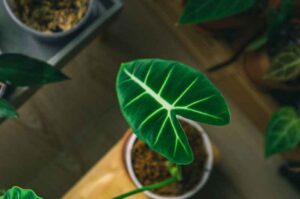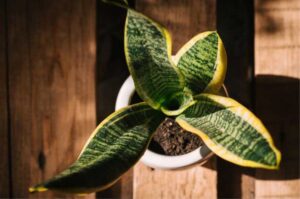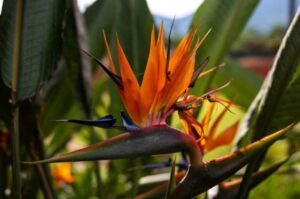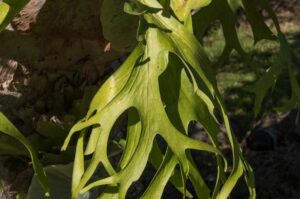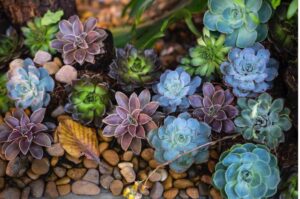Why Is My Umbrella Plant (Schefflera) Leaves Curling?
Umbrella plants are well known for their beautiful foliage and low-maintenance nature. Although they don’t need a lot of attention, often sometimes, their leaves start curling and wilting weirdly. This article will cover all the possible causes for which your Umbrella plant is curling, along with their easy solutions.
The most obvious reasons for which your Umbrella plant leaves curling are underwatering and overwatering. Other causes for this issue include lighting issues, overuse of fertilizers, excessive heat, and also the quality of water that is used to water the plant.
Watering issues, mostly overwatering and underwatering are the main culprits for your Umbrella plant. So these need to be fixed first.
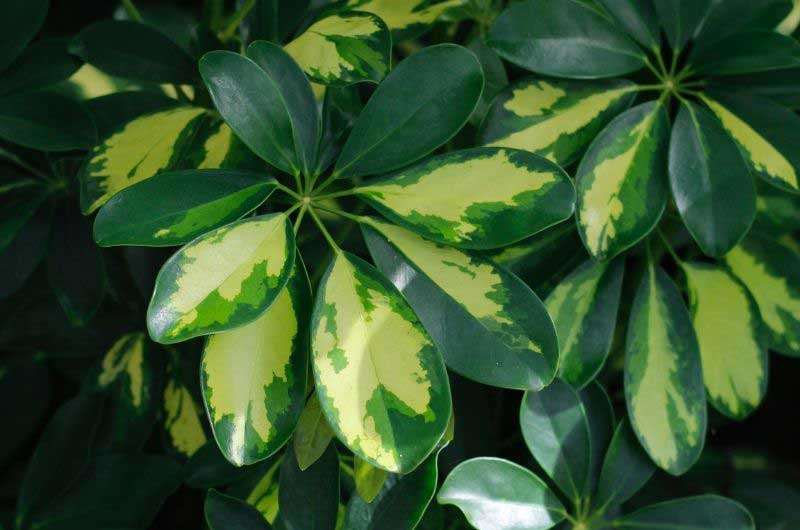
Causes For Which Umbrella Plant (Schefflera) Leaves Curling
There are various causes why the leaves of the Umbrella Plant (Schefflera) are curling. Here are a detailed explanation of all the causes and their solutions.
Underwatering
The plant needs water to grow and the lack of water hampers the growth of the plant. Insufficient water will result in the plant drying up and the leaves curling. The leaves will become crispy.
Watering it enough will easily solve the problem, but not too much water as overwatering is harmful to plants. If no moisture is felt in the finger when stuck down the soil of the plant. If it feels dry, then only the plant needs to be watered.
Solutions
The way to solve this problem is pretty easy. The plant needs to be watered properly. It should be watered enough but not overwatered. And also, the water should be such that it suits the needs of the plant and should not be rich in minerals or chemicals that can hurt the plant.
Degradation Of Roots Due to Overwatering
Owing to the high number of times that overwatering was mentioned, it can easily be understood by the reader that overuse of water is highly harmful to plants and that too in more ways than one.
Leaves curl when the plant is not in soil that has enough capacity to drain the water. Excessive amounts of water diminish the ability of the soil to move the nutrients absorbed from the soil to the roots and this causes the curling of the leaves.
Solutions
When the Umbrella Plant is being planted, it should be made sure that the soil that it is planted in is not too compact. The soil should be allowed to fill the pot on its own and should contain enough nutrients and the right amount of water as well. The biggest problem with compact soil is that they are difficult to drain.
If it is suspected that the plant is suffering from rotting roots, then, it must be repotted in fresh, new, dry soil. The rotted roots must also be cut off before the plant is repotted to prevent the spreading of the rot from the roots.
Excessive Use Of Plant Fertilizers
This is one of the main reasons for the curling or the wilting of the leaves of not only the Umbrella Plant but also various other plants.
The excessive use of fertilizers means that the plant is subjected to harmful chemicals in high quantities, such as arsenic. Very often, fertilizers result in the burning away of leaves and their shriveling and subsequent death.
Commonly, it is noticed that a thin layer or film has collected on the soil around the plant. This is also the result of the overuse of harmful fertilizer.
Solutions
The only way to fix the problems caused by a fertilizer containing an excessive amount of chemicals is by using a fertilizer that is soluble in water and preferably organic, with very few chemicals. The ratios should also be mentioned while the mixing is done. Time-release fertilizer can also be used.
The pot is also important as the problem of overfeeding can be solved by using a pot that can help the excess fertilizer to be drained. Repotting the plant also helps in case of overuse of fertilizers. The frequency of usage of fertilizer depends on the sunlight that the plant is receiving.
An Unnecessary Amount Of Direct Sunlight
As mentioned earlier, the drying up of the plant due to the lack of water is one of the most common reasons for the curling of the leaves of the Umbrella Plant. A very frequent reason for this is the dehydration caused by exposure to an excessive amount of direct sunlight, which often leads to the drying up of the leaves and their wilting due to the lack of a sufficient amount of water.
Solutions
Umbrella Plants prefer a medium amount of sunlight. Therefore, it is best to place them near a window where they can receive a large amount of light but not directly from the Sun.
They can also grow healthily in a spot that receives sunlight for only a part of the day, but the thing that needs to be kept in mind is that the plant should definitely receive a certain amount of sunlight, as the lack of light is also harmful to the Schefflera.
The Quality Of The Water Being Used For Watering
It is commonly found that tap water is not suitable for Umbrella Plants due to the presence of certain chemicals or minerals that are harmful to the plant. The reason is that tap water often contains chlorine, fluorides, and salt and all of these can hamper the growth of an Umbrella Plant by making the leaves turn brown and causing them to curl.
An excessive amount of these chemicals also cause the degradation of the roots of an Umbrella Plant. The regular use of tap water often causes these chemicals to be deposited in the soil in which the plant is planted and prevents the proper nutrition of the plant.
Solutions
There are two ways to solve this problem, and one from them can be chosen according to convenience. The first way is by using rainwater as it contains very less harmful chemicals and minerals and it is also the water that the plant would have received had it been growing out in the natural environment.
The second calls for some effort on the part of the reader. All that needs to be done is that the water needs to be distilled or filtered and distilled or filtered water contains a very low concentration of harmful chemicals or minerals and is safe to be used for Umbrella Plants.
Insufficient Amount Of Sunlight
Sunlight is very much essential to carry out the process of photosynthesis. It is natural that a lack of sunlight will be harmful to the plant.
If placed in a location where your Umbrella plant does not receive enough sunlight, the plant can start showing signs of malnutrition through the curling of leaves as the lack of sunlight results in the plant not having enough nutrition to grow and be healthy and maintain healthy leaves.
Solutions
It has been mentioned earlier that Umbrella Plants prefer a medium amount of sunlight. Both excessive and insufficient exposure to sunlight can cause serious harm to these plants.
If placed in a dark room, that can result in the leaves of the plant curling due to insufficient light. The only way to fix this is by placing the plant at a place where it can receive more sunlight, preferably near a window where it receives an ample amount of sunlight but is not directly in the sun.
The Repotting Of The Plant
The repotting of the plant is done as the solution to other problems but it can turn into a major problem itself if it is not done properly with care. The location where it is kept after repotting is important but so is the process of repotting. The roots often fail to adjust to the new location or the new soil and fail to absorb enough nutrients from the new soil.
Solutions
The solution needs to be implemented before the repotting is done. The plant needs to be watered well before the repotting is done so that when it is repotted, it is done so with the best nutrition.
Patience is also important as plants take time to adjust to new soil. The plant will take some time to grow a new root system. However, after repotting, it should not be watered too much as overwatering can also be harmful to the plant, causing the leaves to curl, and even lead to the death of the plant.
Frequently Occurring Plant Diseases
The two diseases that plague Umbrella Plants the most are leaf spots and leaf blight. Both of these two terrible plant diseases have the same signs: the appearance of small black spots on the leaves that keep growing and often kill the leaves and even the plant.
They are caused by bacterial and fungal pathogens which are in turn caused by the plant receiving an unnecessary amount of watering or the plant being wet for long periods of time, exposing it to harmful microorganisms. Small black spots on the leaf are a sign of lead spots and cause leaves to curl and die.
On the other hand, large black spots are caused by leaf blight that also results in the same fate for the plant: the leaves curl, die and this reduces the overall appearance of the plant.
Solutions
The various ways to solve this problem are as follows :
- Removal of any leaves with any such spots.
- Repotting of the plant to a better location.
- Using a new pot or sanitizing the old one and getting rid of any infections.
- Removal of the old soil from roots before the plant is repotted.
- The new soil should be thoroughly checked so that the disease does not get transferred.
The correct set of techniques need to be followed and the protocols must be maintained to avoid any further harm being done to the plant by the microorganisms.
Infestation By Insects
Various insects act as pests when they attack the plants and harm plants greatly. Some of the most common pests include gnats, mealybugs, mites, and aphids. Each of these is harmful to plants in different ways. Pests such as aphids can go completely unnoticed and this makes them highly dangerous. An aphid infection is only noticed when there’s the growth of mold somewhere on the plant.
Gnats, on the other hand, fly around the area and are easily noticeable but dangerous nonetheless. They can also leave the plant in consideration, fly around the house and harm other plants or objects. Mites appear on leaves and are known to give the plant a white, fluffy appearance, and then, the plant resembles cobwebs. The appearance of this signals an attack by mites.
Solutions
The leaves of the plant and each and every corner of the plant and the pot must be checked when it is watered every day. Insecticides can be used but they contain a huge amount of harmful chemicals, and thus, it is advised to use neem oil instead. Neem will have no side effects on the plant but definitely take some time to start working.
Insufficient Humidity
It was mentioned in the very first paragraph that these plants grow in hot and humid conditions, and locations such as the tropics, for example, the rainforests and the gallery forests. Therefore, insufficient humidity, that is, dry weather can harm these plants greatly.
Schefflera plants prefer locations with more than 50% humidity as low humidity causes these plants to lose water and become dehydrated as they will not be able to absorb more water from the soil. Very soon, to prevent further loss of water, the plant will curl its leaves and the leaves will wilt.
Solutions
The plant should effectively be placed away from dry places where it gets high exposure to sunlight. It should be placed away from air vents or ducts and places where it can experience drafts or strings winds, which might result in the plant or the soil drying up.
It is also important to water the plant regularly but not overwater it as that again is harmful. What can prove effective is not to water it directly but spray it with water. A humidifier can also be used in the place to keep true humidity level above 50% as that is the most preferred level of Umbrella Plants.
Another interesting solution is setting the plant on pebbles surrounded by water as that will keep the humidity around the plant.
Excessive Temperatures
High temperatures are also highly harmful to the Schefflera. A temperature between 60 and 80 degrees F is most suitable for the Umbrella Plant. Thus, if they are left in an environment outside this range, it hampers their growth and also causes the curling of leaves.
Lower temperatures may freeze the plant. On the other hand, higher temperatures dehydrate the plant and the leaves become dry and curl. Therefore, the range must be strictly maintained to keep the plant healthy.
Solutions
The plant should be stored in a place where it gets ample heat but not too much. The range must be maintained. If the plant has been exposed to high temperatures, then, it should be brought indoors and watered properly. All brown and dry leaves must be clipped away. It is best to place the plant indoors.
Lack Of Nutrients Supplied To The Plant
The plant needs nutrients in the right amount and the lack of nutrition is one of the major causes of the curling of leaves.
Calcium (Ca) is one of the most important nutrients required by the plant. Lack of calcium often results in the leaves being irregularly shaped as calcium helps the plant absorb nutrients from the soil.
Leaves with yellow spots are the result of the lack of Boron, which pairs up with Calcium to bring nutrients to the plant.
Lack of zinc is also highly harmful to the plant as zinc is an important nutrient that helps the plant to remain healthy.
Solutions
Using the appropriate amount of fertilizer during the peak of the season when the plant grows, that is, April through September. Fertilization should be done at regular intervals and the routine should be changed when the season changes. Also, too much fertilizer will harm the plant.
Conclusion
So, there are various reasons why the Umbrella Plant may have curling leaves and all of these are very easily solvable problems. It is a plant that needs to be taken care of well, and in doing so, will grow to be very beautiful. Neem is highly helpful when it comes to getting rid of pests. Water-soluble fertilizers are the best for the plant to get nutrients.
As mentioned so many times, the watering of the plant in the right way is very important as overwatering or underwatering will harm the plant.

